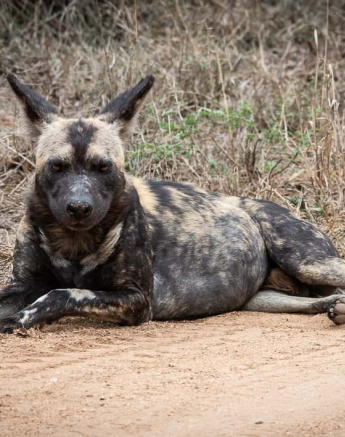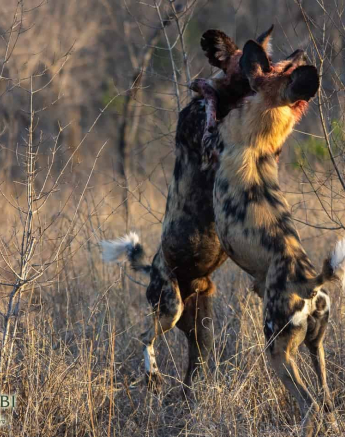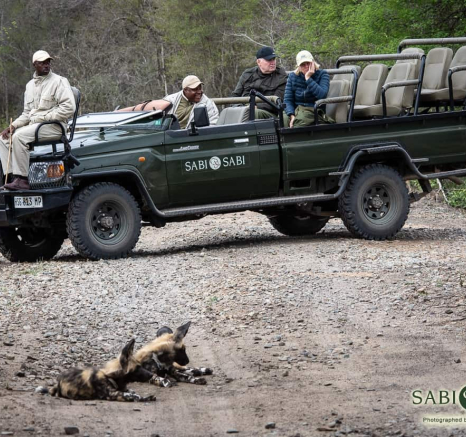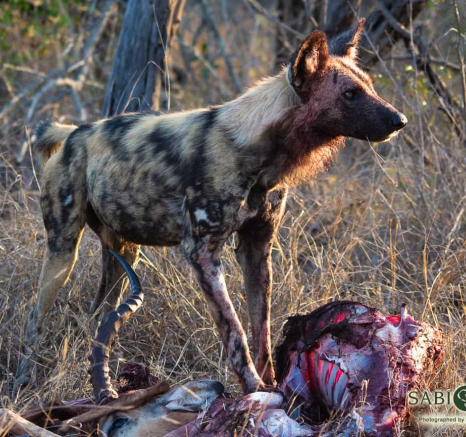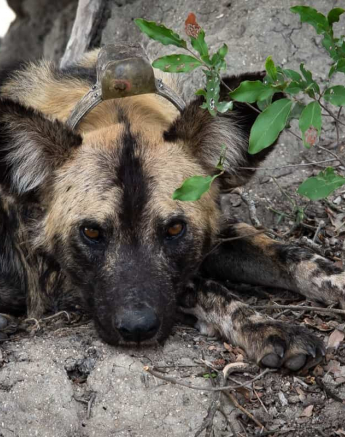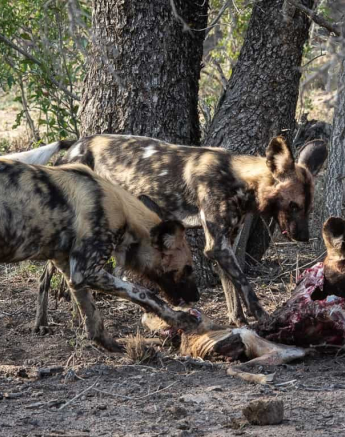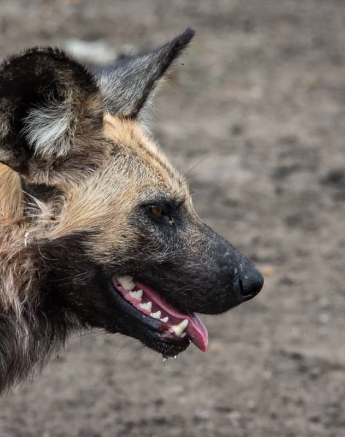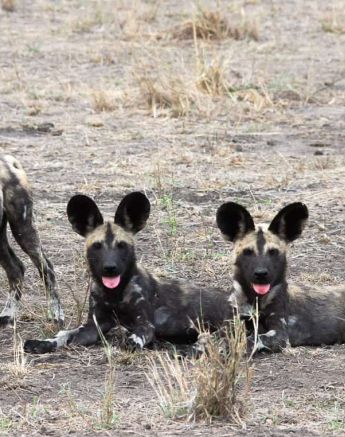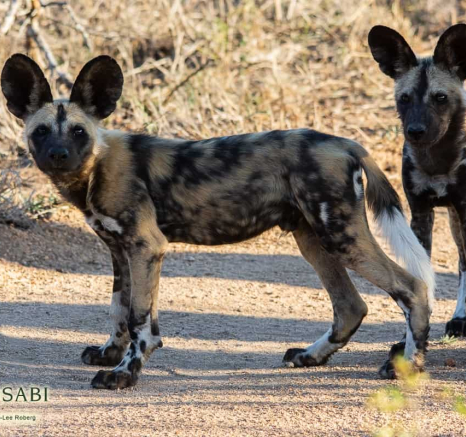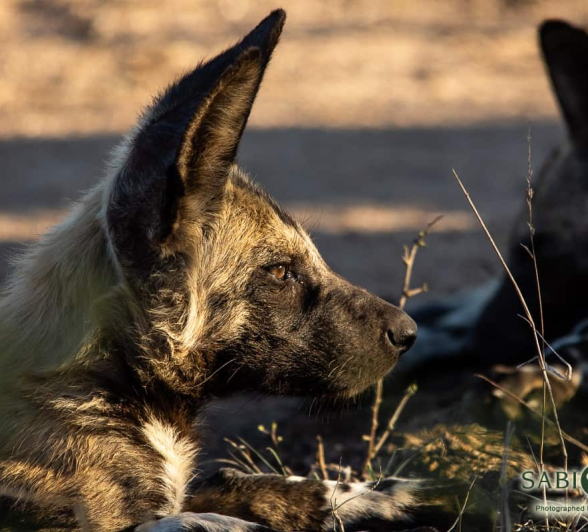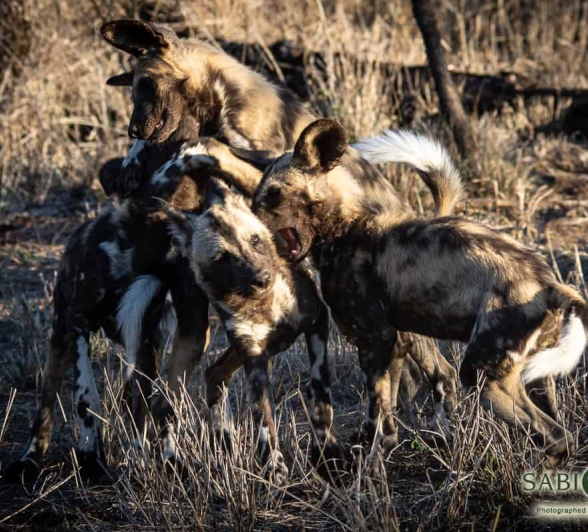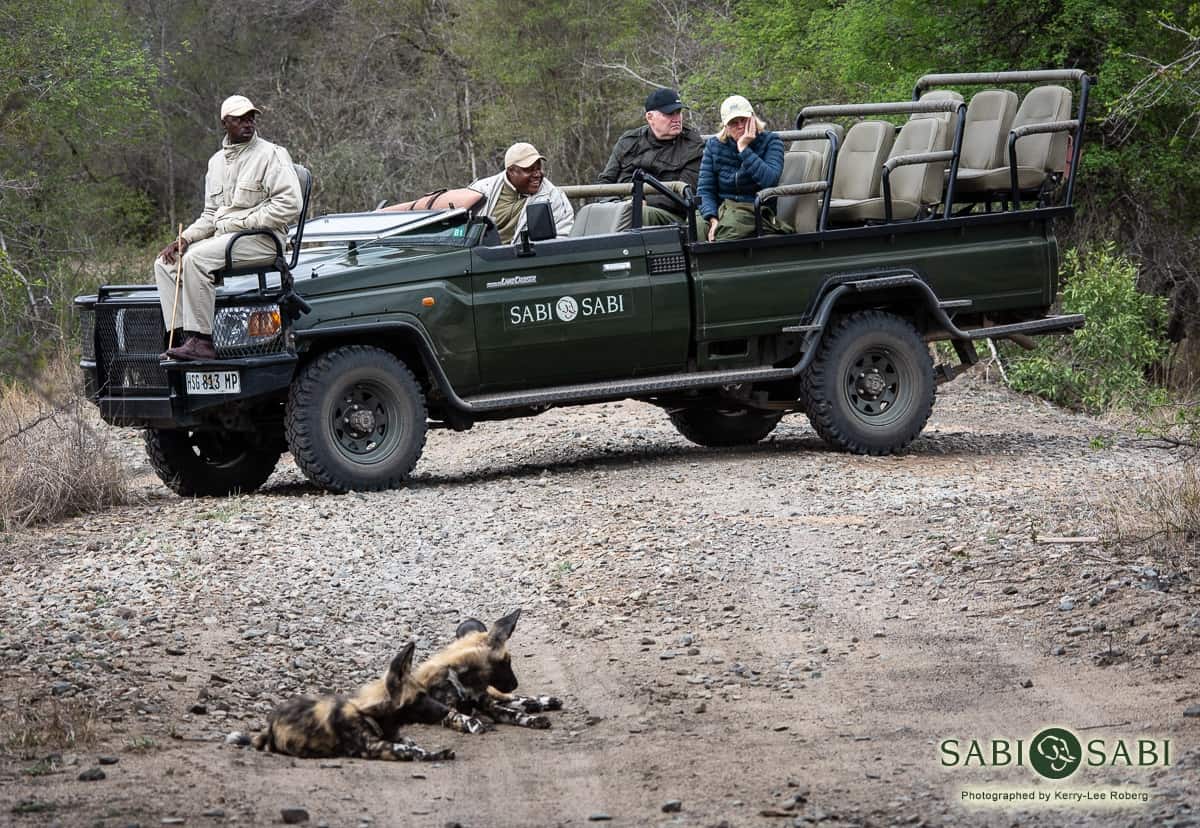Wild Dog
on Dec 14, 2018Species name: Wild Dog – also known as the Painted Wolf
Scientific Name: Lycaon pictus
Weight: Up to 30kgs
Shoulder Height: 60 – 75 cm’s
General Habitat: Includes savannah, dense scrub and woodland
Diet: Carnivorous
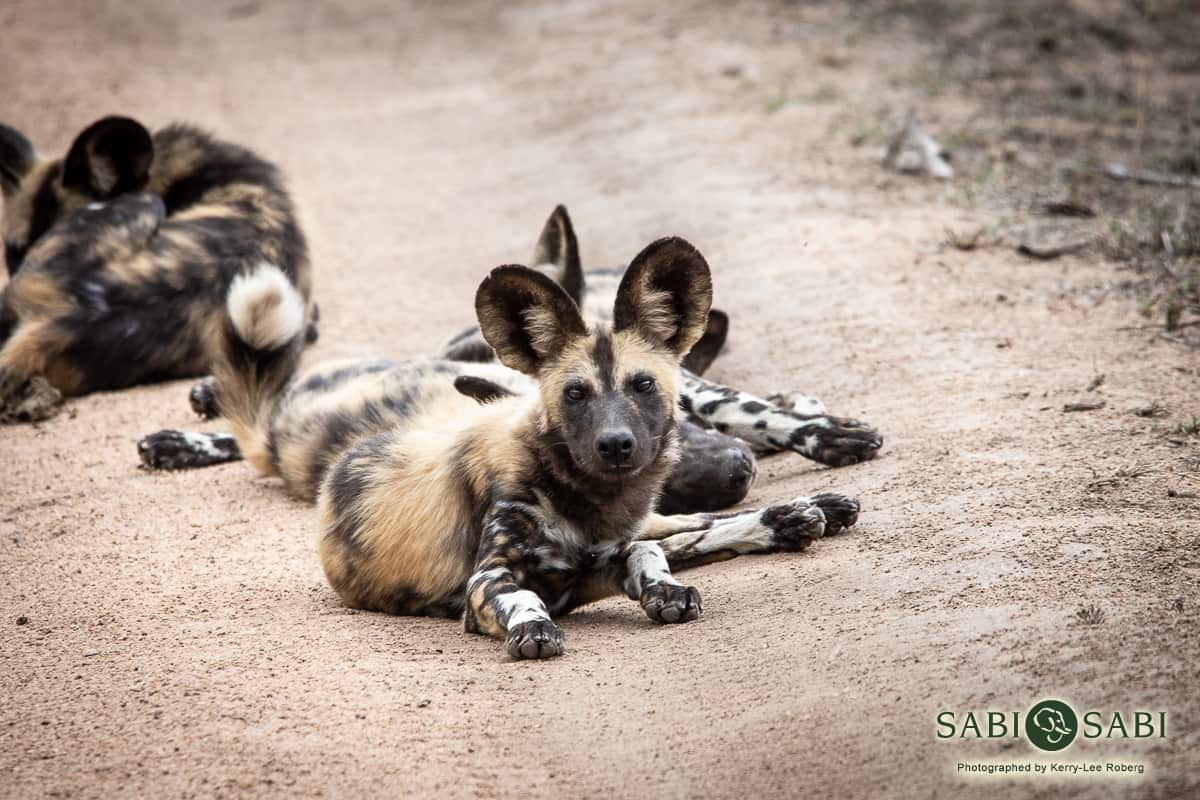
Many people who venture out on safari are completely unaware of this species which is almost as surprising as it is upsetting. The Painted Wolf / Cape Hunting Dog or more commonly named African Wild Dog, is a magnificent species and along with the Big Five and Cheetah, makes up the acclaimed ‘Magnificent 7’. So why, with all the thousands of people who travel all the way to our beautiful continent, does hardly anyone know what an African Wild Dog is? After all, they stand right alongside the hugely well known and sought-after Cheetah.
This fierce predator is named the most endangered carnivore in Southern Africa (± 400 individuals) and the second most endangered carnivore in Africa (± 4000 individuals) behind the Ethiopian Wolf. Compare this to the remaining 7000 Cheetah, and it means that one essentially has less chance of coming across African Wild Dogs than Cheetah and yet the majority of visitors remain completely blasé about the species. This is why I decided to write about the Wild Dog, as before I began guiding at Sabi Sabi, I had barely viewed this rare and special species.
For years the Wild Dog was persecuted and thought of as cruel and violent due to its hunting methods. Farmers and game wardens were encouraged to shoot the canines on sight and were often even rewarded for doing so. This, along with habitat loss, lead to the rapid decline in numbers. More recently, society is trying to adopt the name ‘Painted Wolf’ and move away from the name ‘Wild Dog’ as the latter downplays the rarity, beauty and importance of the species. It is after all much more than your rabid, back street domestic canine which the original name implies.
Wild dogs are pack animals and live in groups of between 6-50 (average 14) members. The group will always consist of an alpha male and female, subordinate adults and offspring of the alphas. An alpha female will generally be the only female to mate and after a period of around 70 days, will whelp (give birth) to a litter of 2-21 (generally 8) pups. If on the off chance a subordinate female becomes pregnant and has her own litter, the alpha female has been known to restrict access to these pups which often means they will not be fed and will ultimately starve. Alternatively, the alpha female will actively kill pups that are not her own. Shortly before the alpha female is ready to whelp, she selects a den site within the pack’s home range. The den is usually a disused burrow in an old termite mound and packs have been known to return to the same den sites annually. She will remain with the pups for the first few days whilst the rest of the pack goes out to hunt.
Painted Wolves seek out a variety of species to hunt but here at Sabi Sabi and ultimately in South Africa, impalas make up the majority of their diet. The canines rely on a combination of stamina and speed to secure their meal. What is rather remarkable is that these creatures can reach speeds of up to 64km/h, but when hunting. average 48km/h and are able to maintain this pace for up to 5km’s putting the Painted Wolf at the top of the leaderboard for long distance running. When the prey has been tired out by the pack, each member rips the unfortunate victim apart, often shock and blood loss lead to the prey’s relatively timely demise. The pack will finish consuming the antelope within minutes and if denning, will immediately make their way to the den site to regurgitate food for the pups and the alpha female before it has time to digest. Pups are capable of eating solid food at about 1 month and begin exploring around the den site at only 3 weeks. By 5 weeks the pups should be fully weaned and at 9 weeks the pack abandons the den site to once again practice their highly nomadic lifestyle covering at times up to 40km in a day.
Painted Wolves are ferocious hunters, however, with their slender build generally avoid confrontations with lions as the large cats will not tolerate other predators in their immediate vicinity and will often injure or even kill Painted Wolves which they come into contact with. The canines are also often followed by Hyenas who trail them in hope of stealing their hard-earned kill. Whilst one or two Hyenas are easily chased off, once the scavengers rally the troops defending their kill is not always worth risking injury and Painted Wolves do lose carcasses to the burly Hyenas.
The size of a pack generally depends on the availability of food within an area, often males of the pack will stay on whilst females will leave generally in small groups of 2-3 to join another male-dominated group. This also gives subordinate females an opportunity to become dominant in a new group. Although this is generally what research has shown, it is not always the case and males are also known to emigrate.
At Sabi Sabi over the past few weeks we have been fortunate enough to have not one, but three packs moving around our reserve. As these animals are so endangered research is being carried out on all packs within the Kruger National Park and thus normally an alpha within the pack is collared. Research in the area began in the 1980’s when ± 200 Painted Wolves were documented, due to strict conservation and research carried out the numbers have doubled which is a huge achievement.
My Memorable Sighting
For me, any sighting of Wild Dogs is a special one. The mere fact that we get to see up to at least 30 of the remaining 400 individuals in the area is amazing! Recently one of my guests requested that she longed to see Painted Wolves in the wild (a tall order!) and low and behold not 5 minutes later, a pack came sprinting by in front of Earth Lodge just before afternoon safari. We relocated them, ten individuals, coming to rest at a watering hole not far away. I was excited to come across the pack (which included five pups) a few days later who had killed a pregnant female Impala minutes before our arrival. The pups carried around and fed on the fetus whilst the adults fed on the large female ensuring there was more than enough to feed them all. Whilst watching this may be hard for some it is so valuable to understand that this is nature. This is what is required to ensure the species thrives and prospers. The following day we came across a different pack consisting of 14 individuals and watched as both adults and pups greeted and played with one another. Being able to sit and observe or speedily follow hunting dogs chase Impalas or Zebra is a massive privilege witch I have no doubt I, along with my entire safari team never take for granted!
Photo Content
